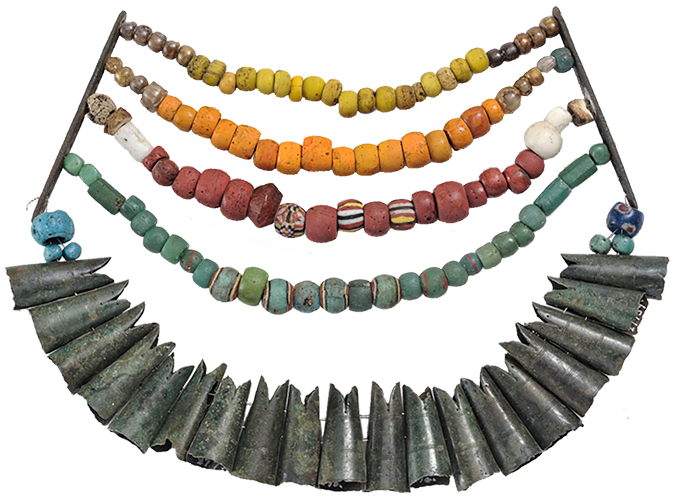There are many stories telling about the Northern People - how they have lived, sailed and conquered faraway lands. It is exciting experience to hold in hand the objects they have created, or sail a Viking ship. The reconstruction of the Oseberg ship made this happen.

The Oseberg ship constitutes one of the most significant and valuable archaeological finds ever discovered in Norway. The vessel was unearthed near Oseberg Farm in 1903, when the farm owner, who had been digging on a hillock located on his property, felt his spade encounter the remains of an unknown object.
Archaeologists soon established that the 7-meter rise harboured a burial mound, inside it, an entire ship. The tomb, while the largest ever found in Norway, was in deplorable condition. The mound around the chamber, however, being formed of peat, had formed a hermetic seal that had kept the chamber’s contents, including objects made of organic materials, such as wood and textiles, more or less intact.
Though more than 21 metres in length and 5.10 metres wide, the ship lay wholly within the mound, its prow pointing northward, its stern toward the south. Its 15 pairs of oar-holes would have permitted 30 men to row simultaneously. The find was in fairly battered condition, its decks bowed by the weight of the earth, its keel pressed upward by the chamber floor, its beams loosened and broken, and other parts damaged beyond repair.

The illustration above shows how the ship appeared as it was originally uncovered, its size inferable through comparison to the human figures behind it.
The wooden burial chamber holding the remains of the mound’s human occupants lay at the vessel’s middle behind its 10-metre central mast.
According to dendrochronological analysis, the wood used to build this chamber was cut in the autumn of 834. Despite some former looting by grave robbers, a great number of items still lay inside, and outside the chamber. Among the recovered grave goods were oak chests, textile wall-hangings, fruits, seeds, lamps, iron rods, spindles, scissors, nails, bronze pails, wooden vessels, wax, thread, linen seeds, pigment plants, rye flour, shoes, looms, sleds, a cart, horse tack, and the bones of fourteen horses, four dogs, and two oxen.

The chamber also contained the incomplete skeletons of two women, one having been around fifty years old and the other in her late seventies at the time of death. Near them were the remains of two beds, complete with coverlets and feather pillows. The beds had originally served as the resting places of the deceased, but had been disturbed by grave robbers, who had ravaged the site and scattered the bones while gathering up as many objects made of precious metals as they could find.
In 1926, after painstaking preparations and twenty-one years of gruelling work, the more than 2,000 fragments of the ship were finally pieced together and the complete ship put on display.
Since then, several smaller replicas have been constructed. In 1987, a life-sized reconstruction, dubbed Dronningen (Queen) was also completed and scheduled for launch. When the time came, however, to the surprise of all involved, the ship capsized and sank within the space of a mere twenty seconds. The misfortune was attributed to inadequate keel weight, and the recovered ship modified with respect to the original to render it seaworthy. Despite this, in March of 1992, the Dronningen entered a storm on the Mediterranean and was smashed to pieces.

In 2004, in response to a proposal to have the ship moved to a different museum, the vessel was photographed from stem to stern and measurements taken using laser technology. In the process, it was discovered that the restorers had assembled its beams incorrectly, resulting in the ship’s having been dimensioned a full 1.5 metres too short. This, of course, may have been the true reason for the replica’s sinking. Though in the end, the ship was never relocated, an initiative known as the “Saga Oseberg Program” did use the now-prized data to construct a new, true-to-life replica, which in 2012 was launched ceremoniously from Tønsberg Quay – and has been riding the waves ever since.
The original ship is currently on view at the Viking Ship Museum in Oslo, Norway.